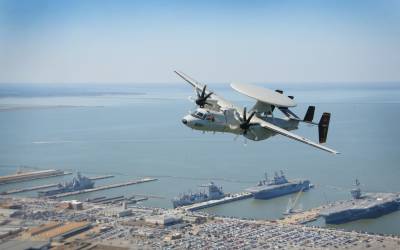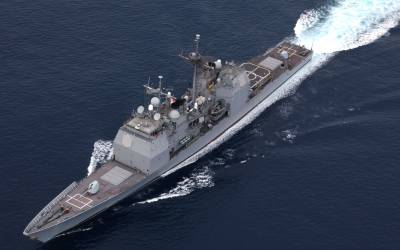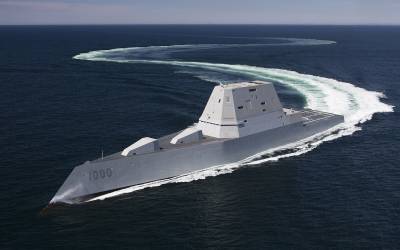Categories


Latest From Daily Rapid Fire
Raytheon Tapped For Advanced Hawkeye | British Helicopters To Exercise With Finnish Air Force | FMS F-35 pilots Will Begin Training At Ebbing
Americas
Raytheon won a $8,8 million deal for the procurement of 11 receiver mainframe assemblies in support of the E2D Advanced Hawkeye aircraft. The contract does not include options. All work will be performed in El Segundo, California. Work is expected to be completed by April 2027. Naval Supply Systems Command Weapon Systems Support, Philadelphia, Pennsylvania, is the contracting activity.
General Atomics Aeronautical Systems, Inc. (GA-ASI) recently released details of a successful live-fire demonstration involving its Mojave unmanned aircraft system (UAS). Conducted on Apr. 13th, at Yuma Proving Ground, Arizona, the test validated the Mojave’s weaponization capabilities and underscored its potential as a multi-mission tactical asset. Partnering with Dillon Aero, GA-ASI equipped the Mojave with two DAP-6 Gun Pod Systems, each boasting a firing rate of 3,000 rounds per minute. During the demonstration, the Mojave completed seven firing passes across two flights, successfully engaging and destroying static targets with an estimated expenditure of 10,000 rounds of ammunition.
Middle East & Africa
According to Military Africa, African countries are investing in modernizing and expanding their military helicopter fleets, which offer mobility, versatility, and firepower. According to a 2023 International Military Helicopter report by Defence IQ, the African market for military helicopters is expected to account for a cumulative spending of $2.2 billion through 2023-2028, making it one of the fastest-growing regions in the world.
Europe
The Finnish Air Force will welcome a contingent of British Army attack helicopters for a joint exercise later this month. Six AH-64E Apache helicopters and approximately 130 British soldiers will participate in Exercise Arrow 24, a large-scale Finnish Army maneuver led by the Armoured Brigade. The deployment kicks off on Apr. 25th, with the Apaches operating from Pirkkala Air Base in western Finland. Their stay is scheduled to last until May 19th. The Satakunta Air Wing of the Finnish Air Force will provide logistical support to the deployed British detachment.
Ebbing Air National Guard Base in Arkansas is preparing to welcome a multinational contingent of fighter jets as it gears up to host the US Foreign Military Sales (FMS) pilot training program for the F-35 Lightning II. The base is currently undergoing a multi-million dollar renovation to accommodate the program, with training expected to begin later this year. According to a newly released schedule, a total of five countries will be participating in the F-35 pilot training program at Ebbing over the next few years: Poland: Leading the pack, Poland is expected to arrive in Fall 2024 with their F-35s, marking the official launch of the international training program at Ebbing. Finland: Following closely behind, Finland is slated to deploy its F-35s to Ebbing in Fall 2025 for pilot training. Germany: German pilots will have their chance to train on the F-35 at Ebbing starting in Fall 2026. Singapore: Singapore’s participation will be unique as they plan to send their aircrews in two phases: The first deployment in Fall 2026 will involve F-35s for pilot training, aligning with the other countries. Singapore is also scheduled to expand its presence further in Summer 2027 with F-16 fighter jets from Luke Air Force Base, marking the only instance of a non-F-35 aircraft participating in the program thus far. Switzerland: Rounding out the list of participating nations, Switzerland is expected to arrive at Ebbing in Summer 2027 with their fleet of F-35s.
Asia-Pacific
The Philippine Air Force (PAF) is preparing for its first-ever participation with aircraft in a major international exercise. The PAF announced it will deploy six FA-50PH light combat aircraft and over 100 personnel to Pitch Black, a large-scale multinational air combat exercise hosted by the Royal Australian Air Force (RAAF) in Darwin, Australia. Previously, the PAF’s involvement in Pitch Black was limited to observer roles. This year’s participation with fighter jets signifies a step up in its international engagement and reflects growing confidence in its air combat capabilities. The exercise provides a valuable platform for the PAF to hone its skills alongside air forces from other nations, fostering interoperability and furthering its tactical development.
Today’s Video
Categories






